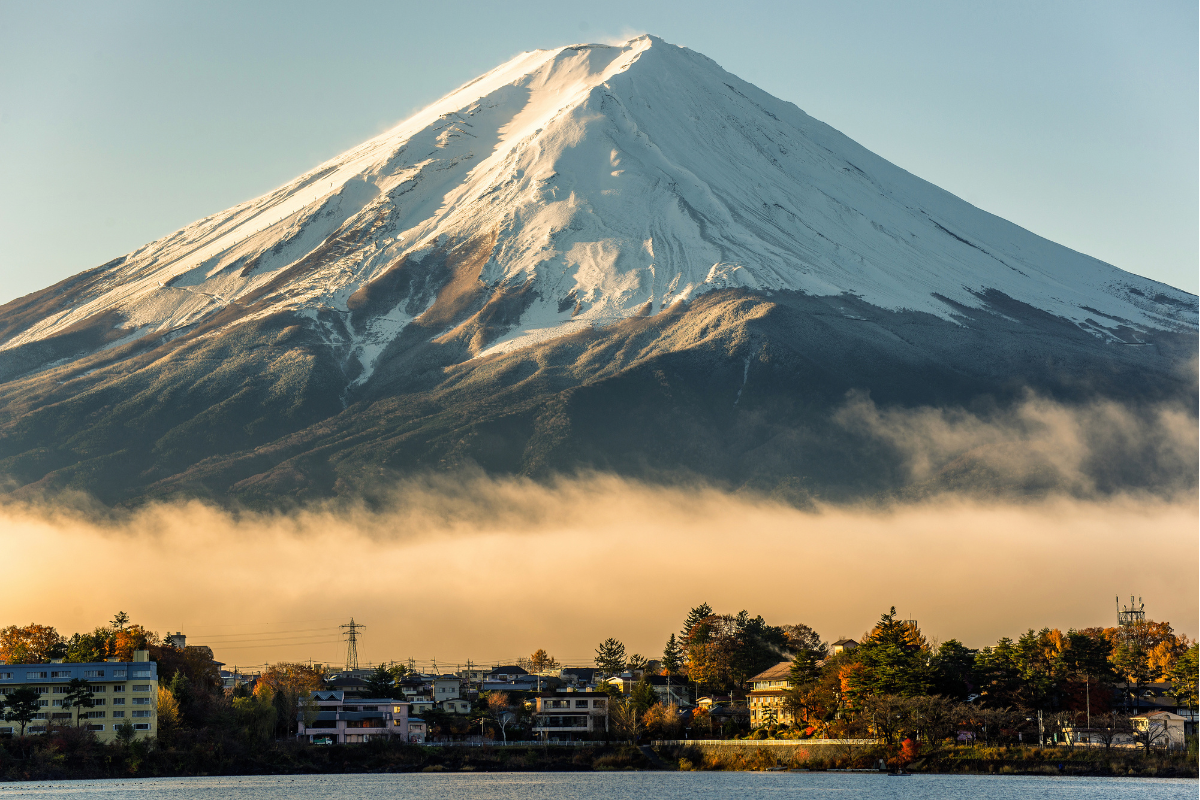
Researchers in Japan found microplastics in clouds at the summit of Mount Fuji and other nearby mountains. | Martinho Smart/Shutterstock
One academic study from Iowa explored using residential PP scrap at different levels in new food bottles, and another in Japan discovered nine different polymer types as microplastics in clouds.
Promise for post-consumer PP in food bottles
An academic study explored how different recycled content levels of PP from materials recovery facilities (MRFs) affect the properties of new extrusion blow-molded food packaging.
The study, which overall found promise in recycling residential PP containers into new food packaging, was published in August in the journal “Application of Polymers in Food Sciences.” It was produced by scientists at Iowa State University, and the results were promoted by the Institute for the Advancement of Food and Nutrition Sciences, which helped fund the research.
The researchers recycled PP from MRFs into extrusion blow-molded bottle food packaging at the following levels of recycled content: 25%, 50%, 75% and 100%. They came to several conclusions, including that the containers had an increased crystallization temperature when PCR was present but there was no practical difference in crystallinity as a function of PCR concentrations.
Additionally, the scientists found the oxygen and water-vapor barrier properties remained relatively consistent in the blends, except for the 100% PCR bottle. They also found that including the post-consumer PP increased the stiffness of the bottles containing virgin PP, although the measured yield stress was “significantly similar.”
Lastly, they found a wider range of non-intentionally added substances was found in the PCR material compared with the virgin plastic, owing to plastic and food additives and degradation byproducts.
“The results of this study provide critical information for stakeholders making decisions to use MRF recovered in food packaging applications,” the study concludes. “Moreover, this study demonstrates the viability of a significant source of PP and its notable long-term impacts, increasing profits by using PCR materials.”
The researchers noted, however, that they used only one sample of PP scrap from one bale from one MRF. They also cautioned that more work should be done to study MRF PP to determine levels of PFAS and phthalates in the plastic to address concerns about toxicity.
Microplastics in the clouds
Japanese researchers took samples of cloud water from the top of Mount Fuji and surrounding mountains. When they tested the samples, they found they contained microplastics.
According to a press release from Waseda University, where the lead researcher is a professor, the study found that airborne microplastics play a role in cloud formation. Using imaging techniques such as attenuated total reflection imaging and micro-Fourier transform infrared spectroscopy, the scientists identified nine different polymer types and one type of rubber.
In the release, Hiroshi Okochi, a professor at Waseda University and the lead researcher, noted that airborne microplastics degrade faster in the upper atmosphere than they do on the ground because they’re exposed to strong ultraviolet radiation, and that degradation releases greenhouse gases.
The hydrophilic microplastics also act as condensation nuclei for cloud ice and water, affecting cloud formation and the climate.
“Microplastics in the free troposphere are transported and contribute to global pollution,” Okochi stated. “If the issue of ‘plastic air pollution’ is not addressed proactively, climate change and ecological risks may become a reality, causing irreversible and serious environmental damage in the future.”
The study was published by the journal Environmental Chemistry Letters.